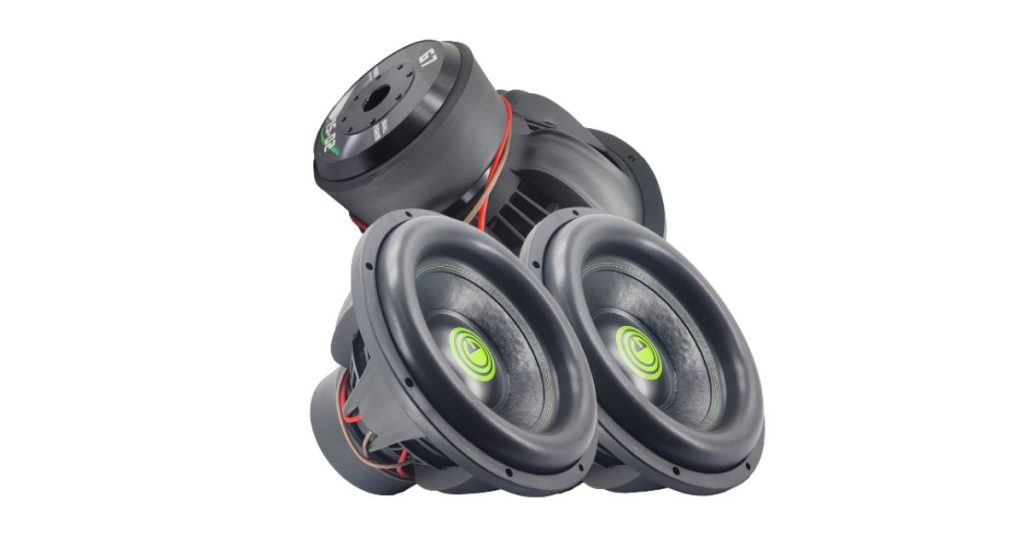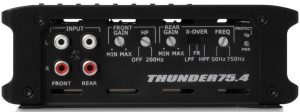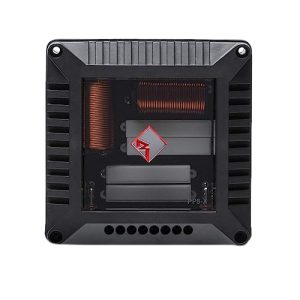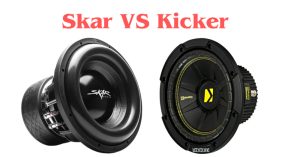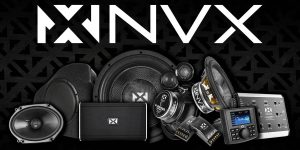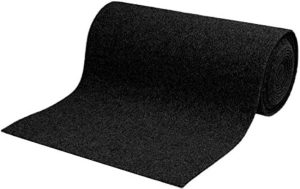Car audio enthusiasts constantly seek ways to elevate their driving experience with powerful, immersive sound. One question that often surfaces is, “Are Gravity subwoofers good for your car stereo?” These subwoofers have gained attention in the car audio market for their innovative design and bold bass performance. This guide dives deep into Gravity subwoofers, exploring their features, benefits, drawbacks, and whether they suit your car audio setup. By the end, you’ll have a clear picture of how these subwoofers can transform your in-car listening experience.
Contents
- What Are Gravity Subwoofers?
- Performance and Sound Quality
- Space Efficiency and Design
- Installation and Compatibility
- Customization Options
- Benefits of Gravity Subwoofers
- Drawbacks to Consider
- Who Should Buy Gravity Subwoofers?
- Comparing Gravity to Other Brands
- Tips for Optimizing Your Gravity Subwoofer
- Where to Buy Gravity Subwoofers
- Final Verdict: Are Gravity Subwoofers Worth It?
What Are Gravity Subwoofers?
Gravity subwoofers burst onto the car audio scene as a fresh option for drivers craving deep, resonant bass. Unlike traditional subwoofers, Gravity models leverage advanced technology to deliver impactful low-frequency sound. Designed to fit various vehicle types, they cater to music lovers who prioritize bass-heavy genres like hip-hop, EDM, or rock. Their compact design and high power handling make them a compelling choice for those upgrading their car stereo systems.
These subwoofers come in multiple sizes, typically ranging from 8 to 15 inches, and feature dual voice coil (DVC) configurations for flexible wiring options. With peak power ratings often reaching 3000–4800 watts, Gravity subwoofers promise to shake your vehicle with hard-hitting bass. But do they live up to the hype? Let’s break down their performance and features to find out.
Performance and Sound Quality
The heart of any subwoofer lies in its ability to produce clear, powerful bass. Gravity subwoofers excel in this area, delivering deep, rich tones that enhance your music’s emotional impact. Whether you’re cruising down the highway or parked at a car audio meet, these subwoofers create a concert-like atmosphere inside your vehicle. Their competition-grade pressed paper cones and high-roll foam surrounds ensure precise bass reproduction, minimizing distortion even at high volumes.
For instance, models like the Gravity Warzone WZ12D4 boast a peak power of 1500 watts and a frequency response as low as 30 Hz. This allows them to handle complex basslines in genres like jazz or classical while still packing a punch for bass-heavy tracks. Users on forums like Reddit have noted that Gravity subwoofers offer “crisp punch” and “unexpectedly deep lows,” making them versatile for various music preferences. However, some users suggest that their bass may not carry as far as premium brands like Kicker or Skar Audio, which could be a consideration for competitive setups.
To get the most out of a Gravity subwoofer, pair it with a compatible amplifier. These subwoofers often require significant power, so ensure your amp can deliver at least 500–1000 watts RMS to match their capabilities. Proper tuning, including adjusting the low-pass filter and gain settings, also plays a critical role in achieving optimal sound quality.
Space Efficiency and Design
One standout feature of Gravity subwoofers is their space-saving design. Traditional subwoofers often demand large enclosures, which can eat up valuable trunk space. In contrast, Gravity subwoofers are engineered for compactness without sacrificing performance. This makes them ideal for smaller vehicles or drivers who need room for groceries, sports gear, or other cargo.
For example, the Gravity GR-805W 8-inch subwoofer fits comfortably in tight spaces, such as under seats or in custom enclosures. Its slim profile doesn’t compromise bass output, delivering 1600 watts of peak power. Larger models, like the 15-inch Gravity Warzone, still maintain a relatively compact footprint compared to competitors, allowing for versatile installation options.
The design also incorporates durable materials, such as carbon fiber cones and treated rubber surrounds, to withstand the harsh automotive environment. Temperature fluctuations and vibrations can wear down lesser subwoofers, but Gravity’s robust construction ensures longevity. This durability appeals to drivers who want a reliable audio upgrade that lasts for years.
Installation and Compatibility
Installing a subwoofer can feel daunting, especially for newcomers to car audio. Gravity subwoofers, while packed with advanced features, require careful installation to unlock their full potential. Their unique design often calls for professional expertise, particularly when integrating them into an existing stereo system.
Start by selecting a subwoofer size that fits your vehicle’s available space. Measure your trunk or designated installation area to ensure a proper fit. Next, verify that your car’s amplifier can handle the subwoofer’s power requirements. For instance, a Gravity subwoofer with a 2-ohm DVC configuration needs an amp stable at 1 or 4 ohms, depending on your wiring setup.
Professional installation is highly recommended for Gravity subwoofers. A skilled installer can build a custom enclosure tailored to your vehicle’s acoustics, ensuring tight, accurate bass. They’ll also secure the subwoofer properly to prevent rattling or damage during bumpy rides. While DIY installation is possible, it carries risks like improper wiring or enclosure design, which can degrade performance.
Compatibility is another key factor. Gravity subwoofers work well with most aftermarket amplifiers and head units, but always check impedance and power ratings. If your car has a factory stereo, consider adding a line output converter to integrate the subwoofer seamlessly. For those upgrading their entire audio system, pairing a Gravity subwoofer with high-quality component speakers and a powerful amp creates a balanced, immersive soundstage.
Customization Options
Car audio is all about personalization, and Gravity subwoofers offer plenty of flexibility to tailor your setup. With various sizes, power ratings, and voice coil configurations, you can choose a model that aligns with your musical tastes and vehicle constraints. For example, a 10-inch subwoofer suits drivers seeking tight, controlled bass, while a 15-inch model delivers earth-shaking lows for bass enthusiasts.
You can also customize your enclosure type to shape the sound. Sealed enclosures produce precise, tight bass, ideal for genres like rock or classical. Ported enclosures, on the other hand, amplify volume and boom, perfect for hip-hop or EDM. Gravity’s website and user manuals provide enclosure specifications, making it easier to build or buy the right box for your subwoofer.
Beyond technical customization, Gravity subwoofers come in sleek, modern designs that enhance your car’s interior aesthetic. Their blacked-out cones and sturdy baskets add a touch of style to custom installs, especially in vehicles with visible audio setups. Whether you’re building a show car or a daily driver, these subwoofers let you express your unique audio vision.
Benefits of Gravity Subwoofers
Gravity subwoofers bring several advantages to the table, making them a worthy contender in the car audio market. Here’s a closer look at why they stand out:
- Powerful Bass: These subwoofers deliver deep, dynamic bass that transforms your music, making every drive feel like a live performance.
- Space Efficiency: Their compact design saves trunk space, ideal for small cars or drivers with storage needs.
- Durability: Built with high-quality materials, Gravity subwoofers withstand vibrations, heat, and wear for long-lasting performance.
- Customization: Multiple sizes and configurations allow you to tailor your audio setup to your preferences.
- Versatility: Suitable for various music genres and vehicle types, from compact sedans to SUVs.
These benefits make Gravity subwoofers appealing to both casual listeners and dedicated audiophiles. Whether you want to feel the bass in your chest or enjoy subtle low-end details, these subwoofers deliver.
Drawbacks to Consider
No product is perfect, and Gravity subwoofers have a few drawbacks to weigh before purchasing. First, their price point tends to be higher than traditional subwoofers. Models like the Gravity Warzone can cost $150–$200 or more, reflecting their advanced technology and premium materials. While many users find the sound quality justifies the cost, budget-conscious buyers may hesitate.
Second, installation complexity can pose a challenge. Unlike plug-and-play powered subwoofers, Gravity models often require custom enclosures and professional wiring. This adds to the overall cost and effort, especially for those new to car audio.
Third, power requirements are substantial. These subwoofers demand robust amplifiers, which may necessitate upgrading your car’s electrical system. Without adequate power, you won’t experience their full potential, and underpowered setups can lead to distortion or damage.
Finally, some user reviews on platforms like Reddit suggest that Gravity subwoofers may not match the performance of top-tier brands like NVX or Sundown Audio in competitive settings. For casual use, this difference is negligible, but car audio competitors might prefer other options.
Who Should Buy Gravity Subwoofers?
Gravity subwoofers suit a wide range of drivers, but they’re especially ideal for certain groups. If you’re a music enthusiast who loves bass-heavy genres, these subwoofers will elevate your listening experience with powerful, immersive sound. Their compact design also appeals to owners of smaller vehicles, where space is at a premium.
Audiophiles seeking high-quality bass without breaking the bank will appreciate Gravity’s balance of performance and value. While not the cheapest option, these subwoofers offer premium features at a mid-range price. They’re also a great choice for drivers willing to invest in professional installation to maximize sound quality.
However, if you’re on a tight budget or prefer a simpler installation process, you might explore alternatives like powered subwoofers or brands like BOSS Audio Systems, which offer budget-friendly options. Similarly, competitive car audio enthusiasts may opt for brands with a stronger reputation in sound-off events.
Comparing Gravity to Other Brands
To put Gravity subwoofers in context, let’s compare them to popular competitors like NVX, Skar Audio, and Kicker. NVX subwoofers, praised for their clarity and build quality, often cost slightly more but deliver exceptional sound for audiophiles. Skar Audio offers similar power handling at a lower price, though some users report less durability. Kicker, a long-standing favorite, provides reliable performance but lacks the compact design of Gravity models.
Gravity stands out for its space efficiency and modern aesthetics, making it a strong contender for drivers prioritizing style and practicality. However, its higher price and installation demands may steer some toward more affordable or user-friendly options.
Tips for Optimizing Your Gravity Subwoofer
To get the best performance from your Gravity subwoofer, follow these practical tips:
- Choose the Right Enclosure: Match your subwoofer to a sealed or ported box based on your music preferences. Consult Gravity’s enclosure specs for optimal dimensions.
- Invest in a Quality Amplifier: Select an amp with sufficient RMS power and stable impedance to drive your subwoofer effectively.
- Hire a Professional Installer: A skilled technician can fine-tune your setup, ensuring tight bass and seamless integration with your stereo system.
- Tune Your System: Adjust crossover settings, phase alignment, and equalization to balance bass with mids and highs.
- Soundproof Your Vehicle: Add sound-deadening materials to reduce rattles and enhance bass clarity.
By taking these steps, you’ll unlock the full potential of your Gravity subwoofer, creating a rich, immersive audio experience.
Where to Buy Gravity Subwoofers
You can find Gravity subwoofers at various retailers, both online and in-store. Websites like Amazon, Walmart, and Newegg offer a range of models, often with customer reviews to guide your decision. Specialty retailers like Gravity Car Audio’s official site or Steve Meade Designs provide detailed product specs and accessories. For the best deals, compare prices across platforms and check for bundle offers that include enclosures or wiring kits.
Before purchasing, verify the seller’s reputation and return policy. Some users have reported issues with damaged units from third-party vendors, so choosing a trusted retailer minimizes risks.
Final Verdict: Are Gravity Subwoofers Worth It?
Gravity subwoofers offer a compelling mix of powerful bass, space-efficient design, and durable construction. They shine in delivering deep, impactful lows that enhance any music genre, making them a solid choice for car audio enthusiasts. Their customization options and modern aesthetics further boost their appeal, especially for drivers who value style and performance.
On the flip side, their higher cost, complex installation, and substantial power requirements may deter budget-conscious buyers or those seeking a plug-and-play solution. For casual listeners or competitive audiophiles, other brands might better suit specific needs.
Ultimately, Gravity subwoofers are worth considering if you prioritize premium bass quality and are willing to invest in a proper setup. Consult with a professional installer to ensure compatibility with your vehicle and audio system. With the right configuration, these subwoofers can turn every drive into a sonic adventure.
Explore the world of premium car audio with Gravity subwoofers and elevate your stereo system today. For more insights on building the ultimate car audio setup, check out Auto Stereo Guide’s reviews, installation tips, and expert recommendations.
